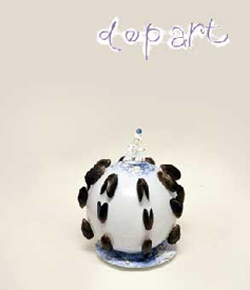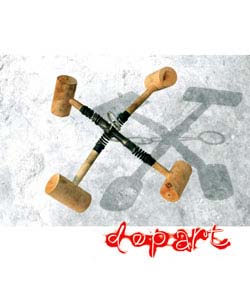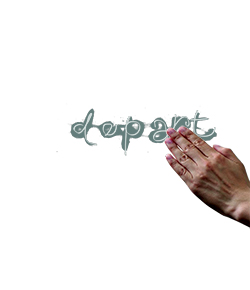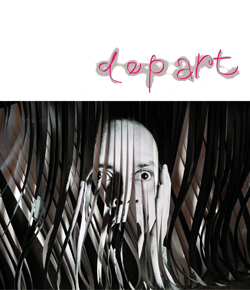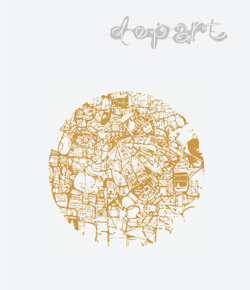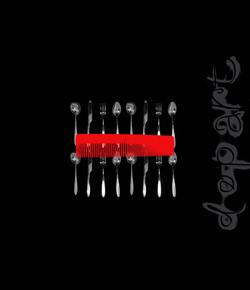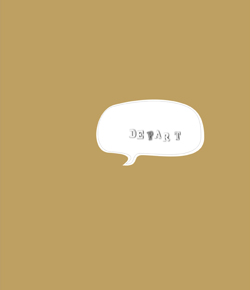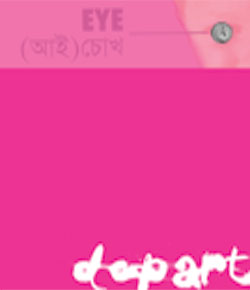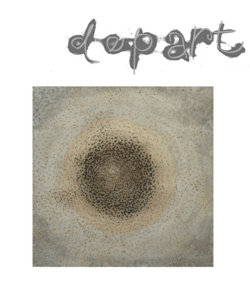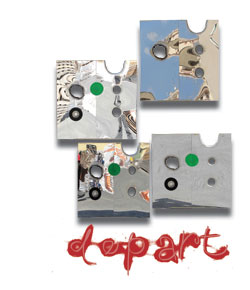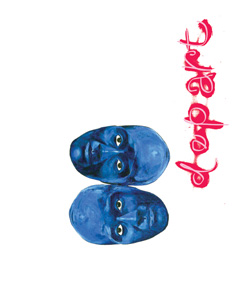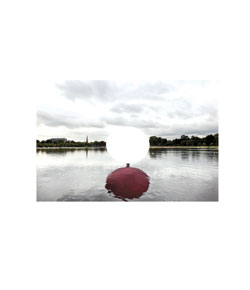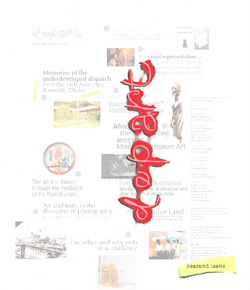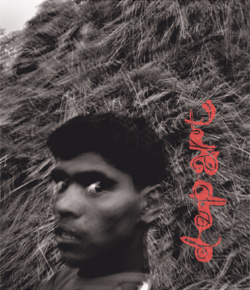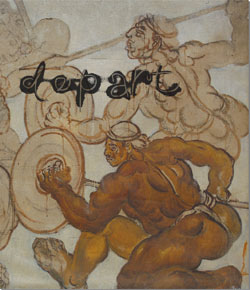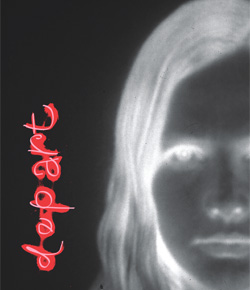navigator
Conspiratual, the never-ending novum and its primal danger
For man is everywhere summoned, claimed, challenged to reveal, in an Enframing even when he knows it not, even when he thinks himself most alone or most dreams of mastering the world. —Paul Virilio


A multiplied prototype, 'man', moves in single-line procession about an Enframing of the world where all but colour seems to be ordered by the destining of a (secret) code. Faceless figures don thinking caps/conceptual hats (the same white cloud for a mind), identical but for the token colour-penciled individuality, the technicolour diversity of accelerated capitalism. These creatures circumambulate or align along geometric forms – huge 'architectural objects' – in a hypnotic relationship, a mysterious correlation or causality, symmetry or alignment, moved by the light of their own motion in an apparent transparency. Ra Kajol's 35th solo exhibition Conspiratual, at Shilpangan, begins in an embossed landscape whose handmade folding 'unconceals' this spotless silver space to reveal an opaque, absolute space underneath – the very blackness of an infinitely expandable, infinitely unknowable world, which is, ironically, the contracting universe brought forth by our vision of a beyond. Each figure possesses the 'password' to this revealed world, and yet, blindly, faceless, in a kind of immobilized motion, they enter the crepuscular dawn of technology; a volcanic moment, a slow, fundamental eruption that Ra Kajol evokes in a series where these figures encounter the Tulip, the Magic Vase, the Unknown Fruit, ushering in the breakthroughs and disjunctures of the modern age, the cyclical forces of whirlwind capitalism. These figures enter the black 'revelation' of a midnight sun inthe third room in Ra Kajol's four-room division of the series, only to t come full-circle from the all-seeing (but unseen) primal 'conspiracy' of the Pyramids (in the first room), to the edge of the earth, where they walk like upright beasts of burden with the weight of a 'bamboo' and naught else in the horizon. The pyramids have melted (in the second room) and the new alignment of man to the 'novum' of technology still is 'danger', for he remains concealed to himself.


Ra Kajol explains this circuitous motion reflective pithily: 'We are growing wider and wider, faster and faster, we don't know where we will reach. We go forward and forward. Finally, we get back to our behind.' This is the motion of a culture engendered by technology, or the 'conspirtual' (where concept= conspiracy), the very act of 'poesis' that Martin Heidegger described as the 'bringing forth' that is technology, where man and his environment both are challenged into being 'for something else,' into bearing such unknown fruits—the novum, the new— where his essence becomes this 'destining', an essence he is in danger of being blind to. Heidegger, in 'The Question Concerning Technology,' describes technology as not merely instrumental but as the 'challenging revealing from a setting-forth (stellen), for an enframing (ge-stell).' Man is challenged into being the 'bestand', the standing-reserve; objectless, he becomes the object of this 'concept/conspiracy', whereas he believes he is challenging the earth into ordering, for his dominion.


Ra Kajol's 'touch and press' finger-fold technique is itself a part of this engendered culture. Paul Virilio, the philosopher who theorized the role of speed in politics and the technologically produced disappearance of cultural life, describes the effect of such innovations as nanotechnology and the 'vision-machine' (the various screens/gateways that are a part of a 'hypermodern reality') as an immobilization of the body through an infinitely 'approaching proximity' and the domination of the 'image' over the imagination.


The exhibition itself follows this movement. The return to 'one's behind' carries a motif Ra Kajol has used elsewhere, the bamboo, but his use of a new figurative language here excludes popular art as is evident in his other works (2011) where it is readable only in traces. Human motivity, then, in Ra Kajol is at once elusive and co-present with a conceptual conspiracy; the all-seeing pyramid may be archetypical, but the magic vase, unknown fruit, the volcano, tulip, these conspire to man's aspirations (from bigger to 'sparer', conservative to neo-conservative via an illusion of liberal dreams, or as Virilio would say, the illusion of democracy while the enormity of the ambitions of the engine are hidden by the apparent transparency of the destruction of time-distance for speed-vision).
This world, manifested, is then stripped of the democratic illusion or neo-conservative capitalist sheerness; for in approaching proximity, we find we are at the beginning again, in an infinitely 'contracting' world, where the screens of arrival, apparent motion, conceal the rude military logistics of the 'engine' of control.

Ra Kajol's topology may appear to ironically imitate the capitalist glitz of the business office and the skyscraper, yet that is the mere surface of a depth field forever eluding the creatures who line up with hapless hands around the sumptuous fruit, the silver sensuality of the geometric 'forces' giving way to the darkness beyond relief, our vision of 'space,' which is itself the limits of vision: light blacked-out, the converse and unapparent world to the one sought by the speed of light.
Ra Kajol's Conspiritual was on view from March 3 to 15, 2014, in Gallery Shilpangan.




